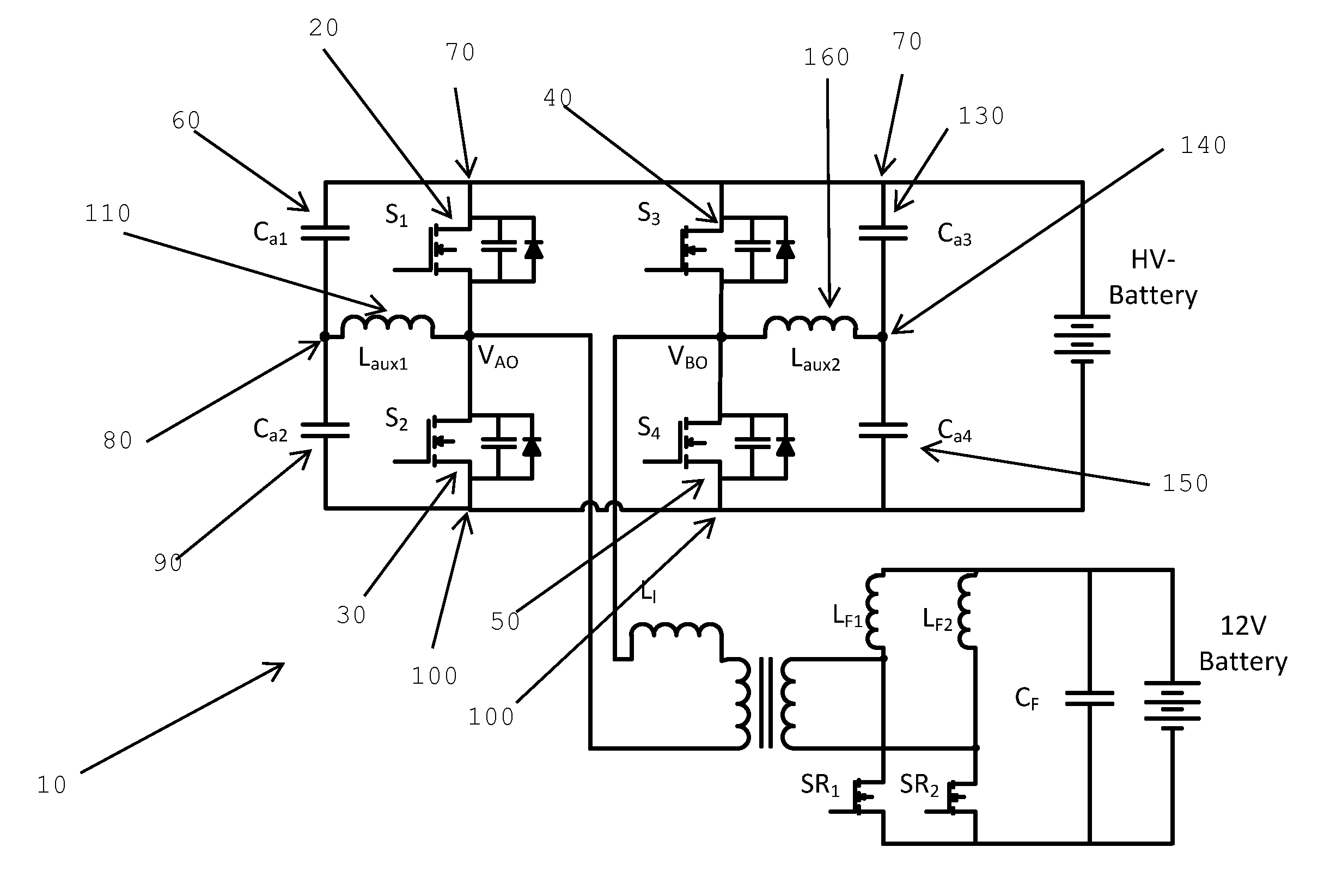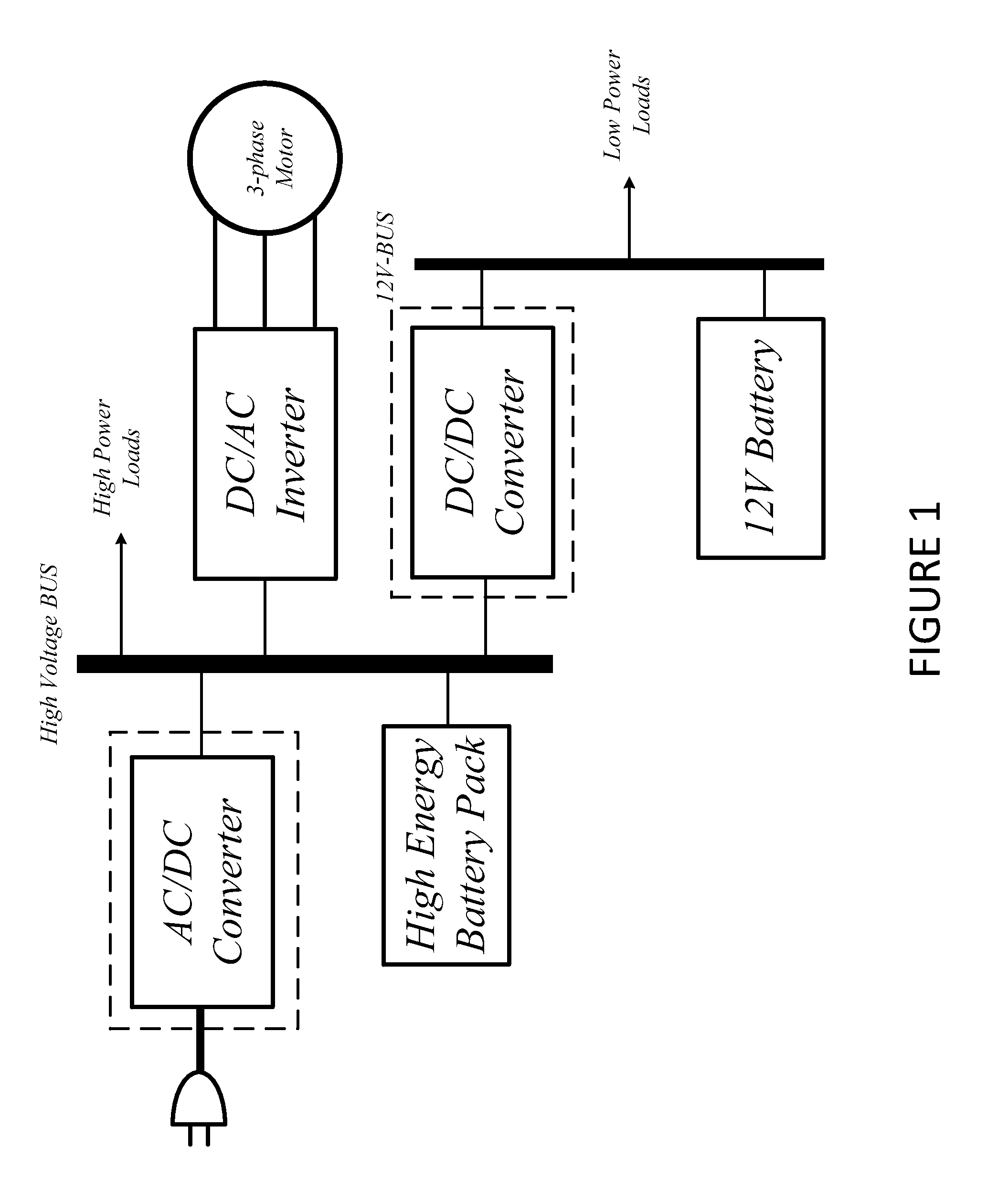Load adaptive variable frequency phase-shift full-bridge dc/dc converter
a phase-shift, adaptive variable frequency technology, applied in the direction of dc-dc conversion, power conversion systems, instruments, etc., can solve the problems of loss of zvs loss of zvs of converters with parallel inductors under heavy loads,
- Summary
- Abstract
- Description
- Claims
- Application Information
AI Technical Summary
Benefits of technology
Problems solved by technology
Method used
Image
Examples
Embodiment Construction
[0052]In one aspect, the invention presents a control method that optimizes the required reactive current provided by the auxiliary circuit. In another aspect, the invention provides a control circuit that adaptively controls the reactive current required to guarantee ZVS under different load conditions. This leads to significantly reduced semiconductor conduction losses as well as reduced auxiliary circuit losses.
[0053]FIG. 1 is a block diagram of an electric vehicle power conversion system. In this system there are two battery units: a high voltage battery (traction n battery), which feeds the inverter and the electric motor, and a 12V battery. The power conversion system consists of an AC / DC converter, a three-phase DC / AC inverter and a DC / DC converter. The AC / DC converter is a plug-in converter, which charges the high voltage battery. The high voltage battery supplies power to the three-phase inverter which feeds the 3-phase motor. The high voltage battery also charges the 12V b...
PUM
 Login to View More
Login to View More Abstract
Description
Claims
Application Information
 Login to View More
Login to View More - R&D
- Intellectual Property
- Life Sciences
- Materials
- Tech Scout
- Unparalleled Data Quality
- Higher Quality Content
- 60% Fewer Hallucinations
Browse by: Latest US Patents, China's latest patents, Technical Efficacy Thesaurus, Application Domain, Technology Topic, Popular Technical Reports.
© 2025 PatSnap. All rights reserved.Legal|Privacy policy|Modern Slavery Act Transparency Statement|Sitemap|About US| Contact US: help@patsnap.com



